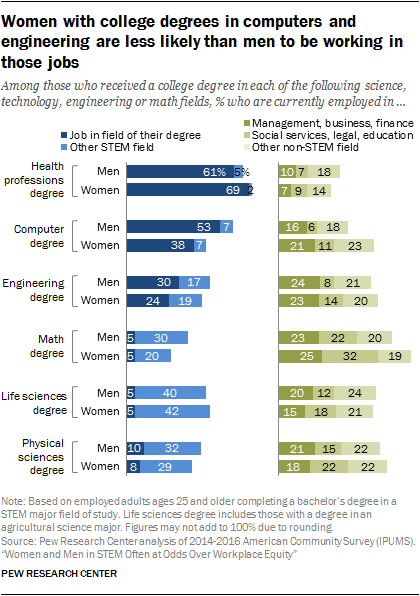The SACNAS National Diversity in STEM ConferencePosted by Glenn Ayala on July 3rd, 2021 A Biased View of Diversity in STEM Summit 2020 - NYU Tandon School of
Science labor force variety describes cultivating talent, and promoting the full inclusion of excellence throughout the social spectrum. Variety results in better analytical, broadens the talent swimming pool and is important for long-term financial development. In future posts, I wish to shed light on the state of variety in science presently and to share some thoughts about how we might much better promote inclusive excellence. The continuous dispute about the Science Innovation Engineering and Mathematics (STEM) variety issue has a pretty low signal-to-noise ratio: Despite the continuous stream of TED Talks, books, blog posts, and corporate efforts, there's remarkably little consensus about what the most current statistics and trends meanmuch less how we're going to address the concerns they raise. In the interest of speaking a universal language, here are 5 revealing numbers that paint a clear-eyed image of the state and impossible-to-ignore implications of STEM diversity today. Approximated size of the STEM labor force in the U.S. by 2018. (Source:) STEM jobs are growing quicker than any other U.S. 
Available jobs in the field are set to increase 17 percent in between 2014 and 2024, while non-STEM work will grow just 12 percent. Technology business aloneled by giants like Facebook, Amazon, and Applewill require to fill more than 650,000 new tasks by 2018. Two-thirds of these new hires will be STEM skill. Diversity in STEM - Diversity, Equity & Inclusion Collection at for Dummies
kids are girls and an increasing number are underrepresented minorities. In China, by contrast, where there's a strong cultural emphasis on ORIGINATE FROM an early age, of engineers are females. The Latest Info Found Here of working experts presently in science and engineering jobs in the U.S who are white or Asian males. (Source:) Fifteen years into the 21st century, the skill pool makeup in STEM disciplines looks like a 1980s U.S. As do the graduating classes of American undergraduate engineering and innovation programs: While more females than men are enrolled in all U.S. undergraduate programs today, simply 18 percent of ladies made a bachelor's degree in engineering as just recently as 2012. The number was even lower for Hispanics (8 percent) and for blacks (4 percent). Like it? Share it! |


